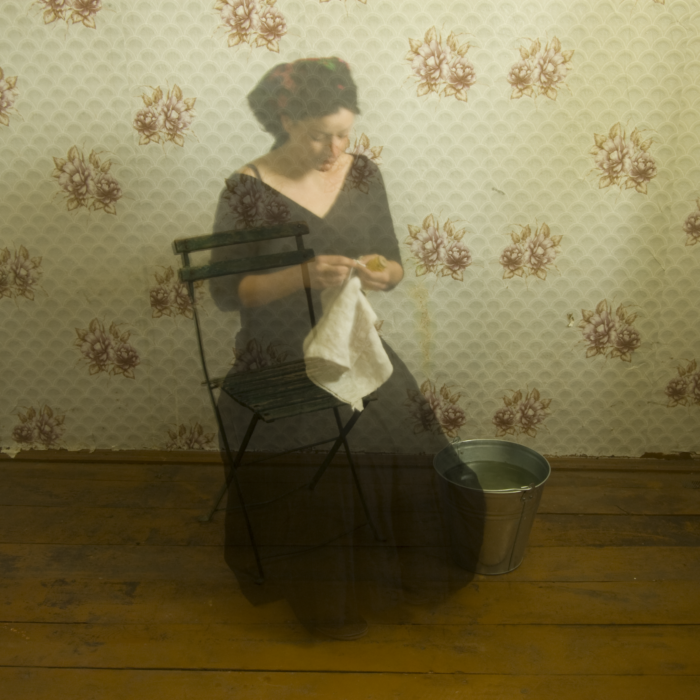Morgan sings her slavic repertoire.
The artist residencies we organised in Ukraine had one purpose : allowing our guests to produce an artistic account, each through his own medium, of their experience in the contaminated lands. Their works have exceeded our hopes, notably with the very beautiful comic book of Emmanuel Lepage or with Antoine Choplin’s novel. Morgan had done her share collecting numerous traditional songs to sing in our performances and her concerts.
But then singing is her very own way of reaching out to people, of crossing borders.
From Viera Movchan belting out her popular repertoire in our ears when we didn’t speak a single word of Ukrainian (in a tiny little office of the Volodarka school) to Morgan, two years later in a police station, drawing tears from the officers with her rendition of one of their heartbreaking songs. Unlikeley but true.
The record of this Ukrainian, Russian and Byelorussian repertoire had been lacking.
Before recording in binaural, we had already produced an album using an AB couple in real acoustics. Two pairs of DPA 4003 and quite a lot of layers allowed Morgan to sing the different parts in number of places inside the audio scene.
A process announcing what we would be doing later in 3D : the main issues are dealt with at recording stage and the sound source lives, vibrates in an acoustic reality.
After the Ynys album experience, first intermediate step between headphones and speakers, Morgan was ready for a fully binaural record, designed solely for headphone listening. It is still possible to play it through speakers of course but it hasn’t been optimised for this use. Recorded at home, in native binaural, this album displays Morgan’s talent for singing multiple parts (what she calls the clan), distributed in the 3D space. The harp parts, still or on the move, also benefit from the definition provided by binaural.
